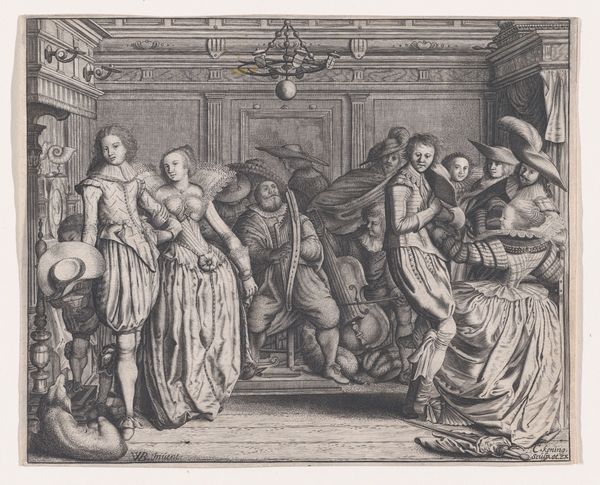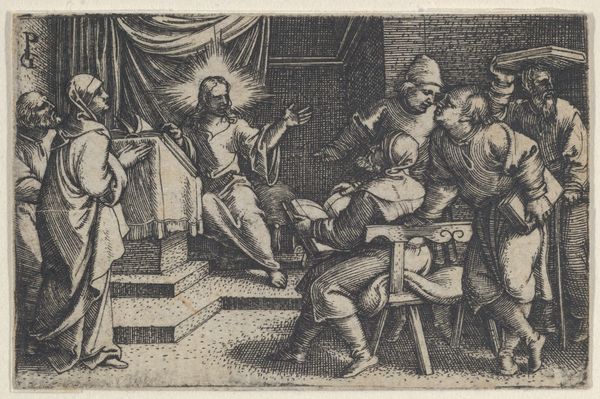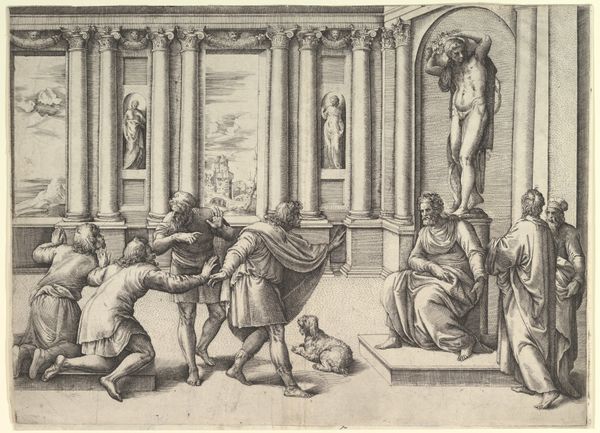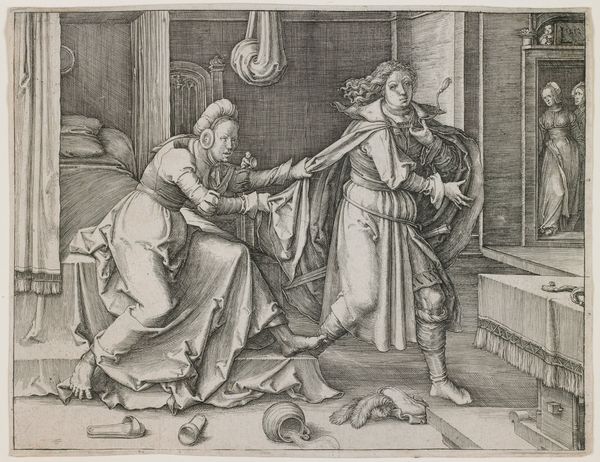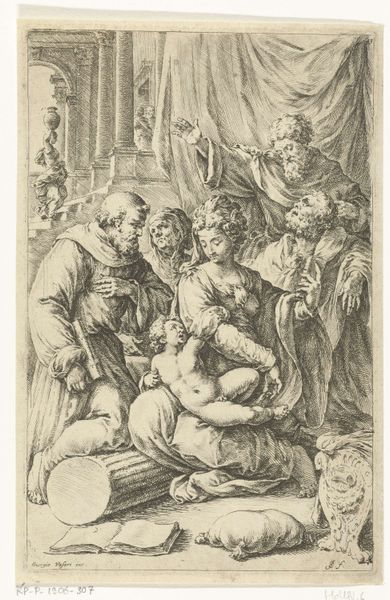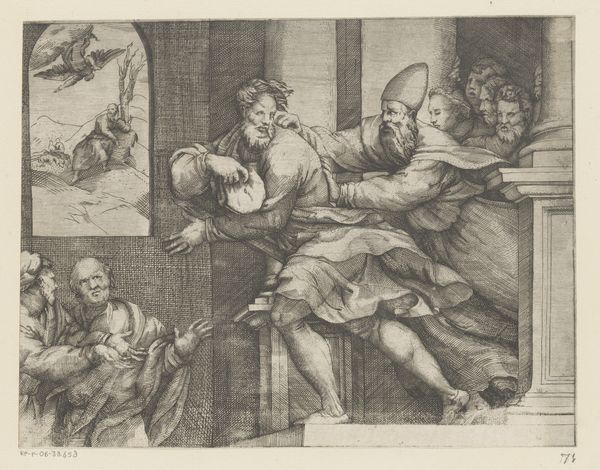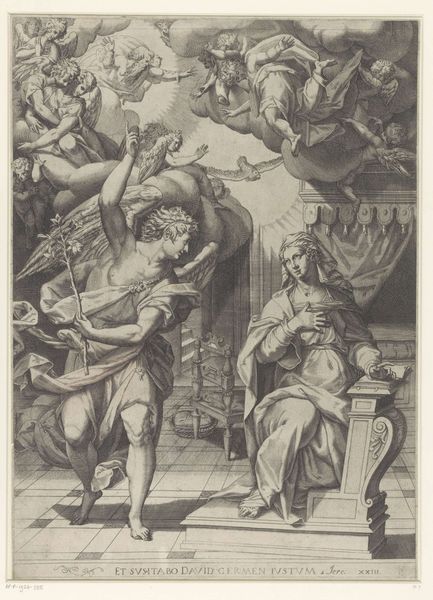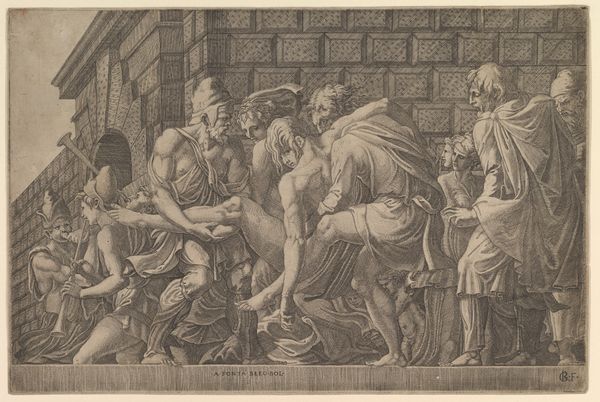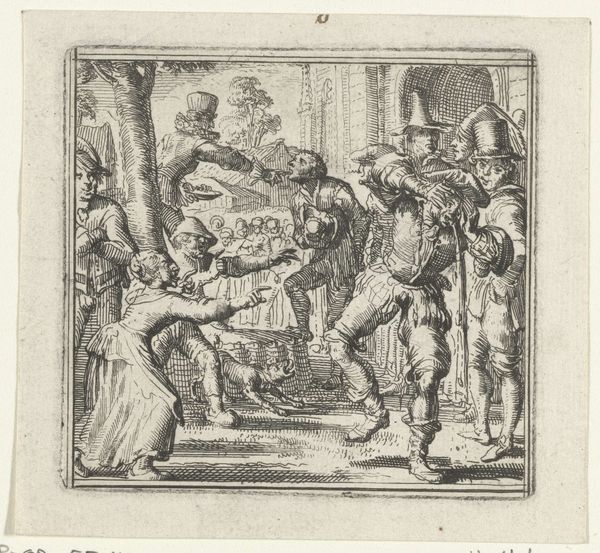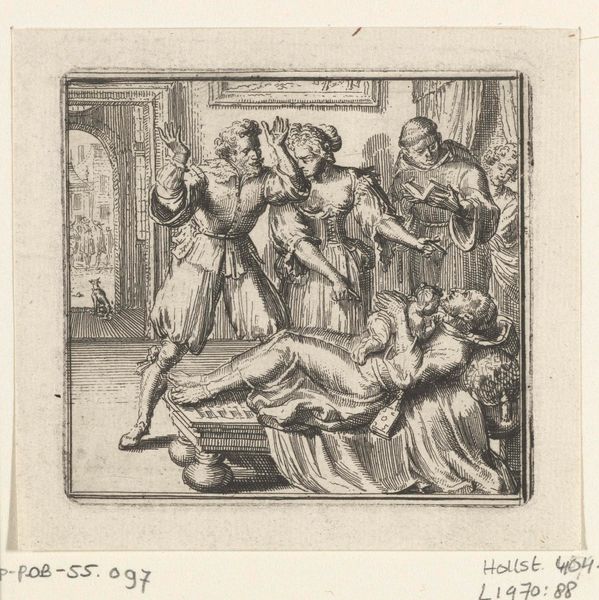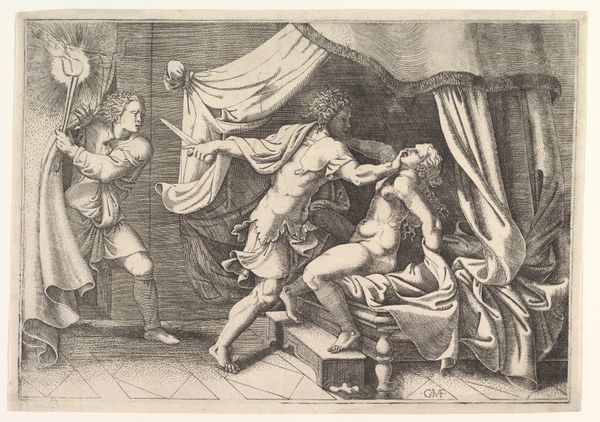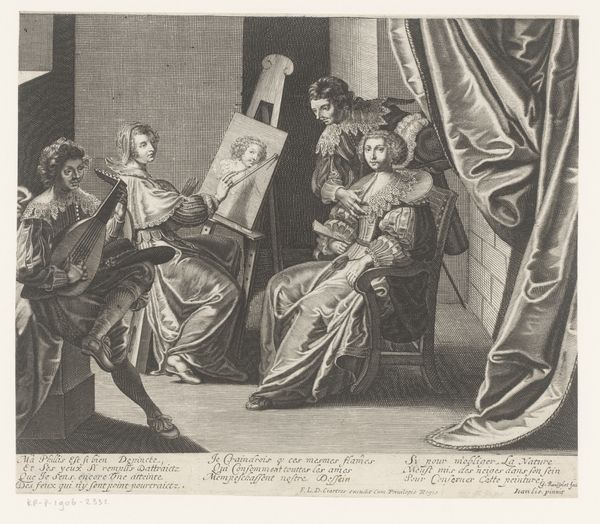
Tobias and the Archangel Raphael, from The Story of Tobias 1543
0:00
0:00
drawing, print, engraving
#
drawing
#
narrative-art
# print
#
figuration
#
history-painting
#
northern-renaissance
#
engraving
#
angel
Dimensions: Sheet (trimmed): 2 5/8 × 4 3/16 in. (6.7 × 10.6 cm)
Copyright: Public Domain
Editor: So, this engraving, "Tobias and the Archangel Raphael, from The Story of Tobias," created in 1543 by Georg Pencz, has a very clear, staged feel. I’m struck by the intense expressions, like they’re performing a play. What historical context can illuminate this piece? Curator: The staged quality you're noticing connects to the performative aspects of religious life during the Reformation. Pencz, as a printmaker in Nuremberg, was deeply embedded in a city grappling with shifting religious authority. This image is less about pure faith, perhaps, and more about visualizing religious narrative for public consumption. Does the setting seem significant to you? Editor: Definitely! The figures are set in a domestic interior but positioned in front of an important architectural component of the stage. But the space seems… small, compressed. Curator: Exactly. That cramped feeling is important. Pencz is working within a tradition of Northern Renaissance art, where detailed interior spaces often serve as sites for moral dramas. The setting, even if idealized, brings the divine story into a relatable, human context. Who do you think this was made for, and how might it have been used? Editor: Maybe this print was used in homes, perhaps to help illustrate the biblical narrative for a family's daily worship or lessons? Something personal and instructional? Curator: Precisely. Prints like these served a crucial role in disseminating religious stories, especially in a time of increased literacy. Pencz's work demonstrates the power of imagery to shape religious understanding and the politics embedded in interpreting such stories. It also shows that art always participates in public conversation. Editor: I never considered how prints like this were essentially mass media of their time! I'll definitely look at art differently now, thinking about its role in shaping public opinion and the powers at play. Curator: Excellent. Remember, art is not created in a vacuum, it exists in continuous conversation within its social milieu, mirroring and shaping that very society, even now.
Comments
No comments
Be the first to comment and join the conversation on the ultimate creative platform.
